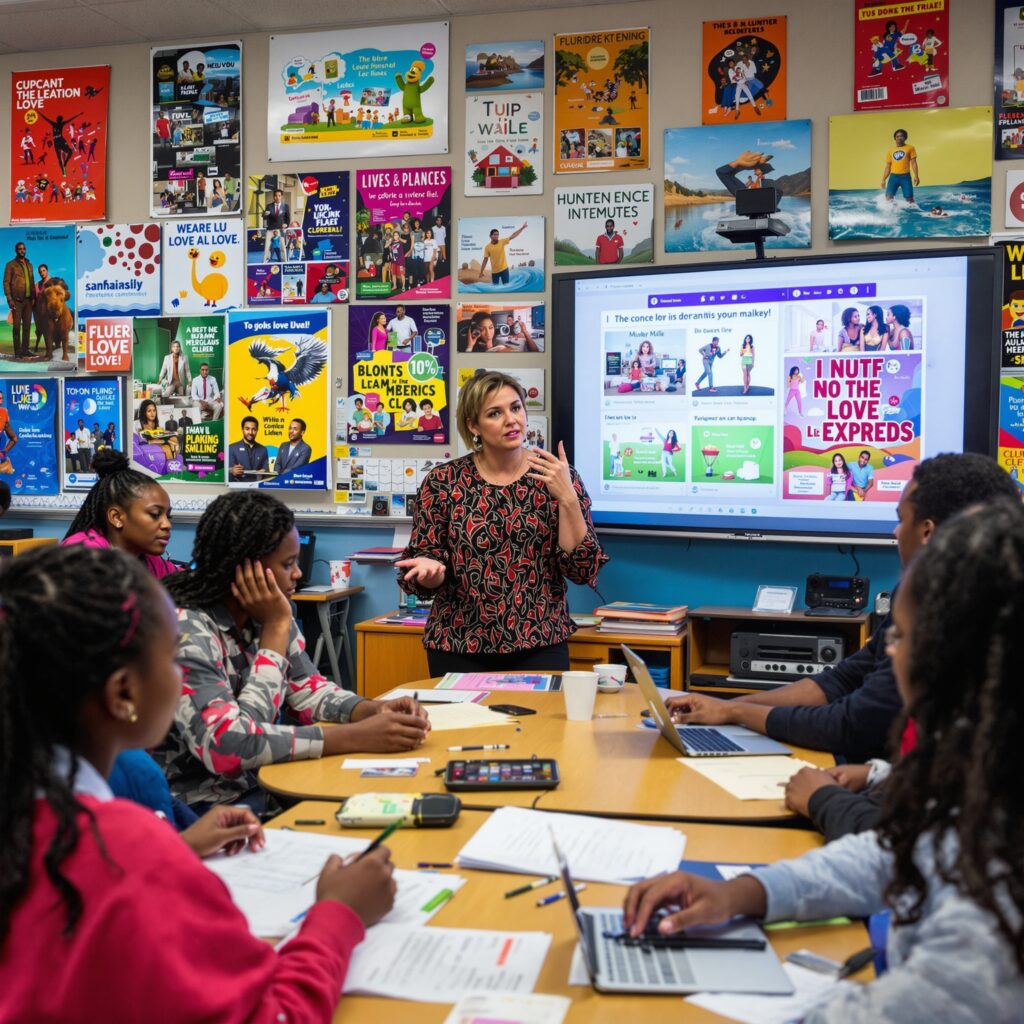- 05
- May
- 2025
Visual Literacy in Afrikaans language education in South Africa
- Posted Byadmin
- InEducation, Uncategorized

Visual Literacy in Afrikaans language education in South Africa
The importance and teaching of visual literacy, particularly within the context of Afrikaans language education in South Africa has to focus on the increasing dominance of visual texts in modern society and the necessity for learners to develop the skills to critically analyze and interpret these texts.
This list includes “Ikone, Tekens, Inligtingstukke (brosjures, strooibiljette), Gravures, Graffiti, Illustrasies, Plakkate, Grafiese speletjies, Grappe (geïllustreer), Spotprente, Padtekens, Kaarte, Foto’s, Beelde, modelle, Skyfies, Prente, Simbole, Advertensies, Transparante, Strokiesprente en -verhale, Skilderye, tekeninge, Video’s, rekenaarbeelde, TV-programme.”
Key Characteristics and Properties of Visual Texts:
- They are very powerful because the learner (viewer) is so involved. “baie sterk omdat die leerder so betrokke daarby is.”
- They are created with the aim of influencing the learner “met die doel om die leerder te beïnvloed.”
- The reality depicted is not necessarily the “real” reality “nie noodwendig die ‘werklike’ werklikheid nie.”
- They have a specific purpose, requiring viewers to ask what the text wants to achieve “wat die teks wil bereik.”
- They often contain both a superficial and a real hidden message “ʼn oppervlakkige en werklike verskuilde boodskap.”
- They utilize methods of persuasion “oorredingsmetodes.”
- Interpretation relies on prior knowledge and personal/cultural frameworks, leading to diverse interpretations.
- Context is crucial for understanding.
Essential Terminology for Analyzing Visual Texts including:
- Teken (Sign): Meaning within a specific context (e.g., hammer and sickle).
- Simbool (Symbol): A sign/object representing something else with a deeper meaning (e.g., a dove symbolizing peace).
- Beeld (Image): A picture or visual representation.
- Ikoon (Icon): An image used in place of something else (e.g., computer icons).
- Indeks (Index): A sign pointing to its object (e.g., a shadow indicating presence).
- Denotasie (Denotation): Literal meaning.
- Konnotasie (Connotation): Suggested or deeper meaning.
- Afgeleide betekenis (Derived meaning): Creating meaning from implication.
- Geïmpliseerde betekenis (Implied meaning): Meaning not explicitly stated.
- Gevoelstaal (Emotional language): Language evoking strong feelings.
- Assosiasie (Association): Connecting something with something else.
- Metafoor (Metaphor): Using one thing to describe another with similar qualities.
- Samelewingsmites (Societal myths): Interpretation influenced by the culture of the intended audience.
The role of the teacher in developing learners’ visual literacy is to provide guidance on how to study and assess visual texts like cartoons and advertisements.
Visual literacy is an important new area in South African Afrikaans education, as visual communication becomes more common. Different types of visual texts—like ads and digital media—need strong interpretation skills because they are persuasive, carry multiple messages, and reflect culture. Teaching visual literacy in Afrikaans classes helps students learn the right terms and methods to analyze these texts. This prepares them to understand and handle today’s visual culture, which is vital for success in school, work, and life.